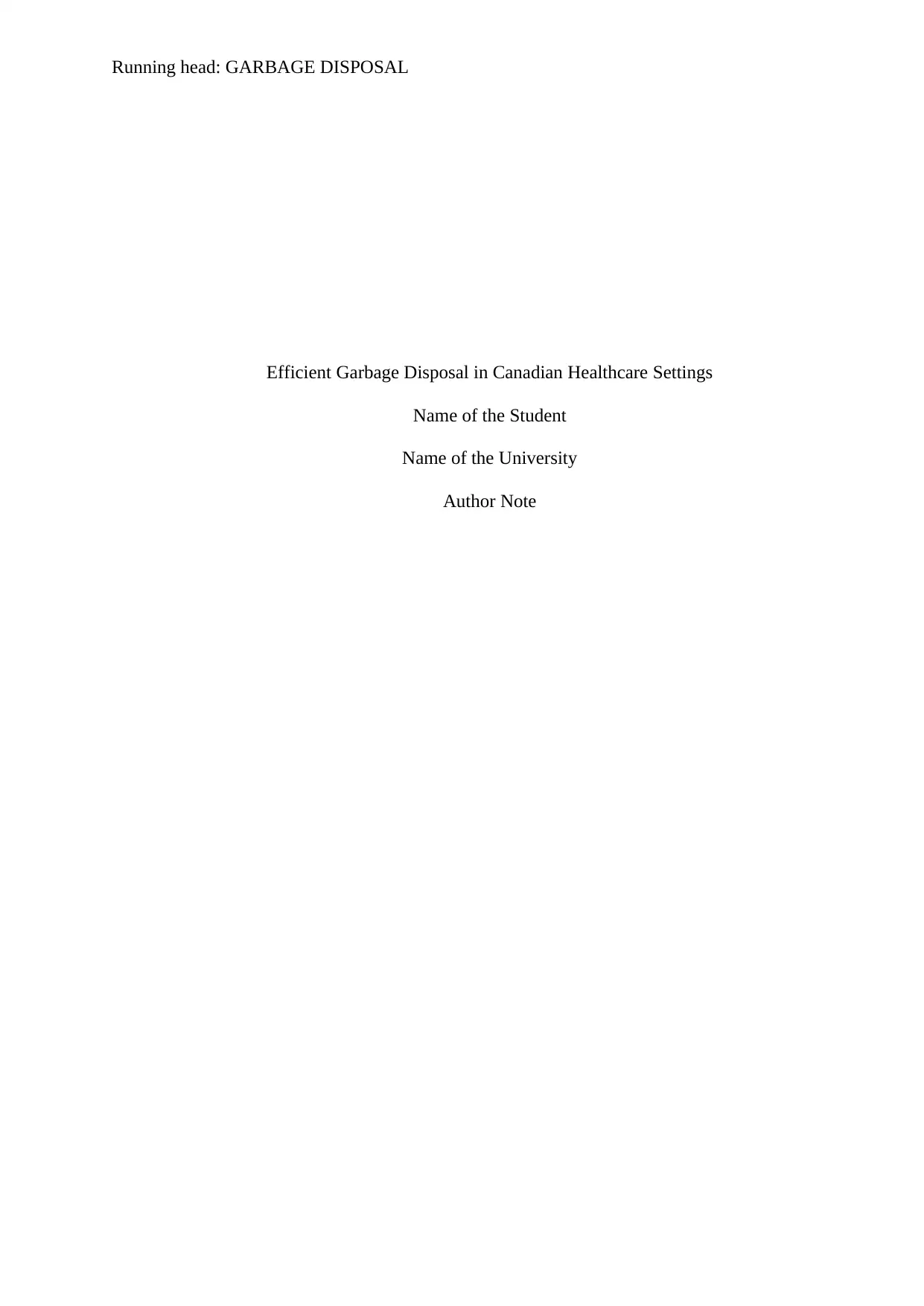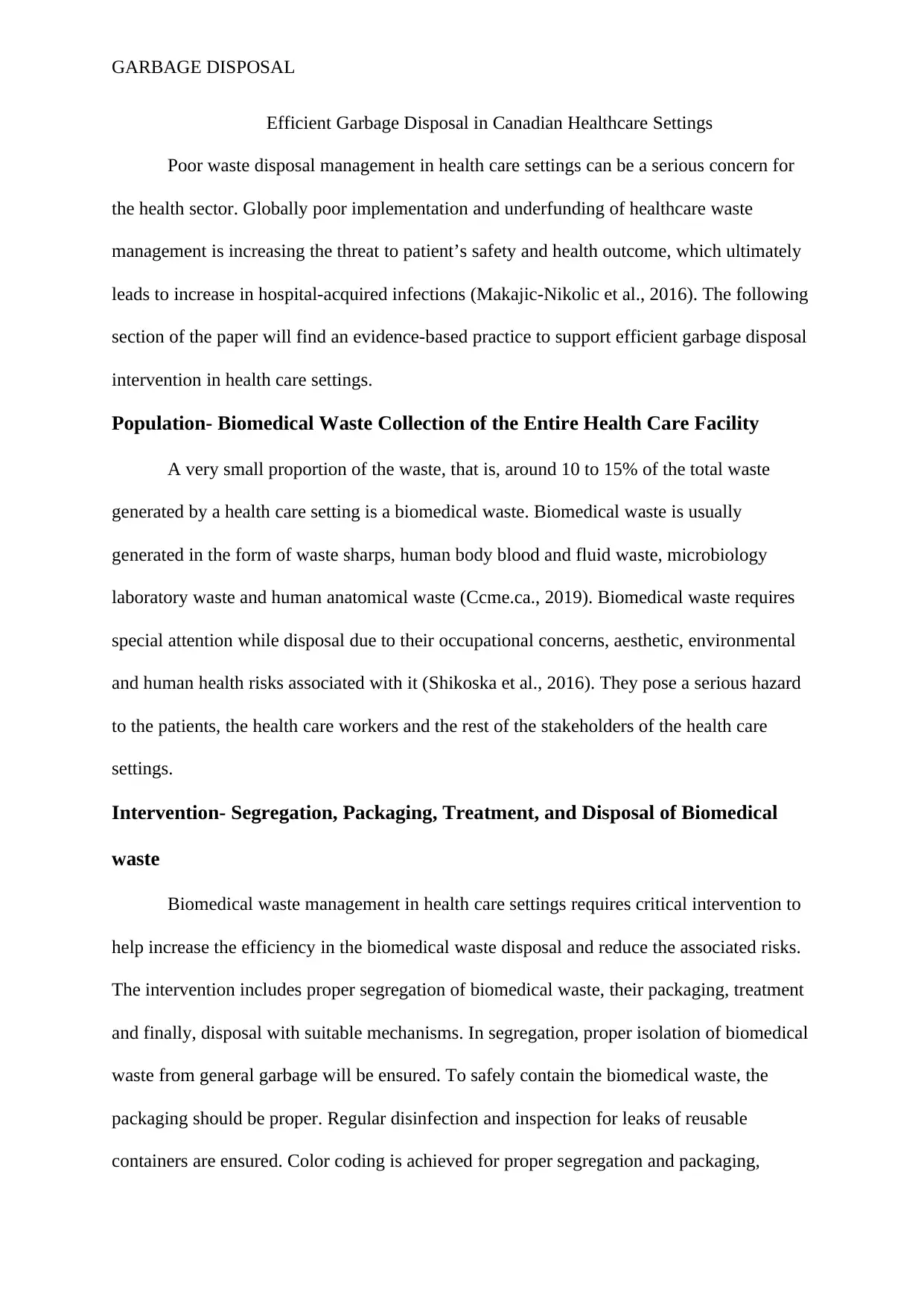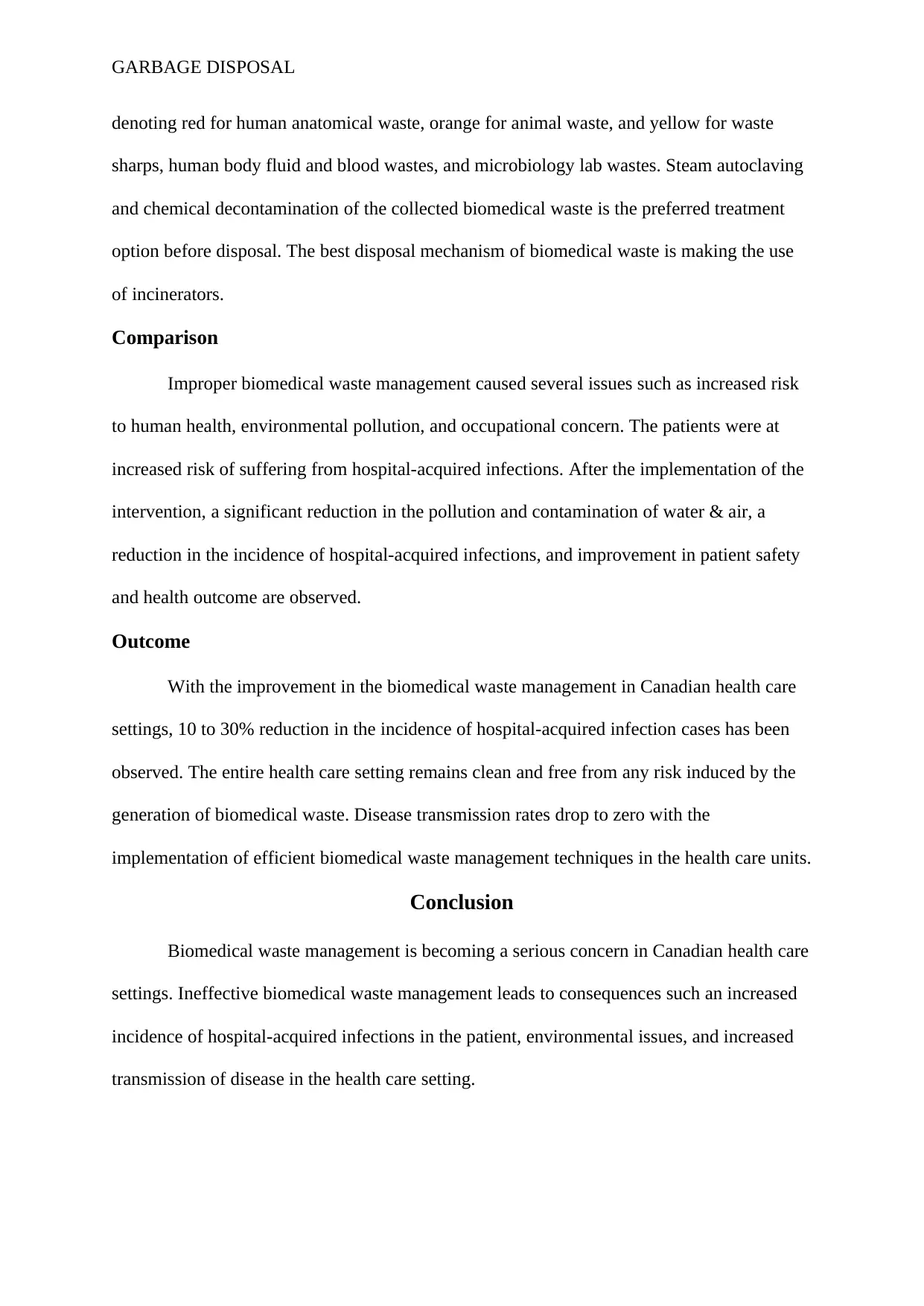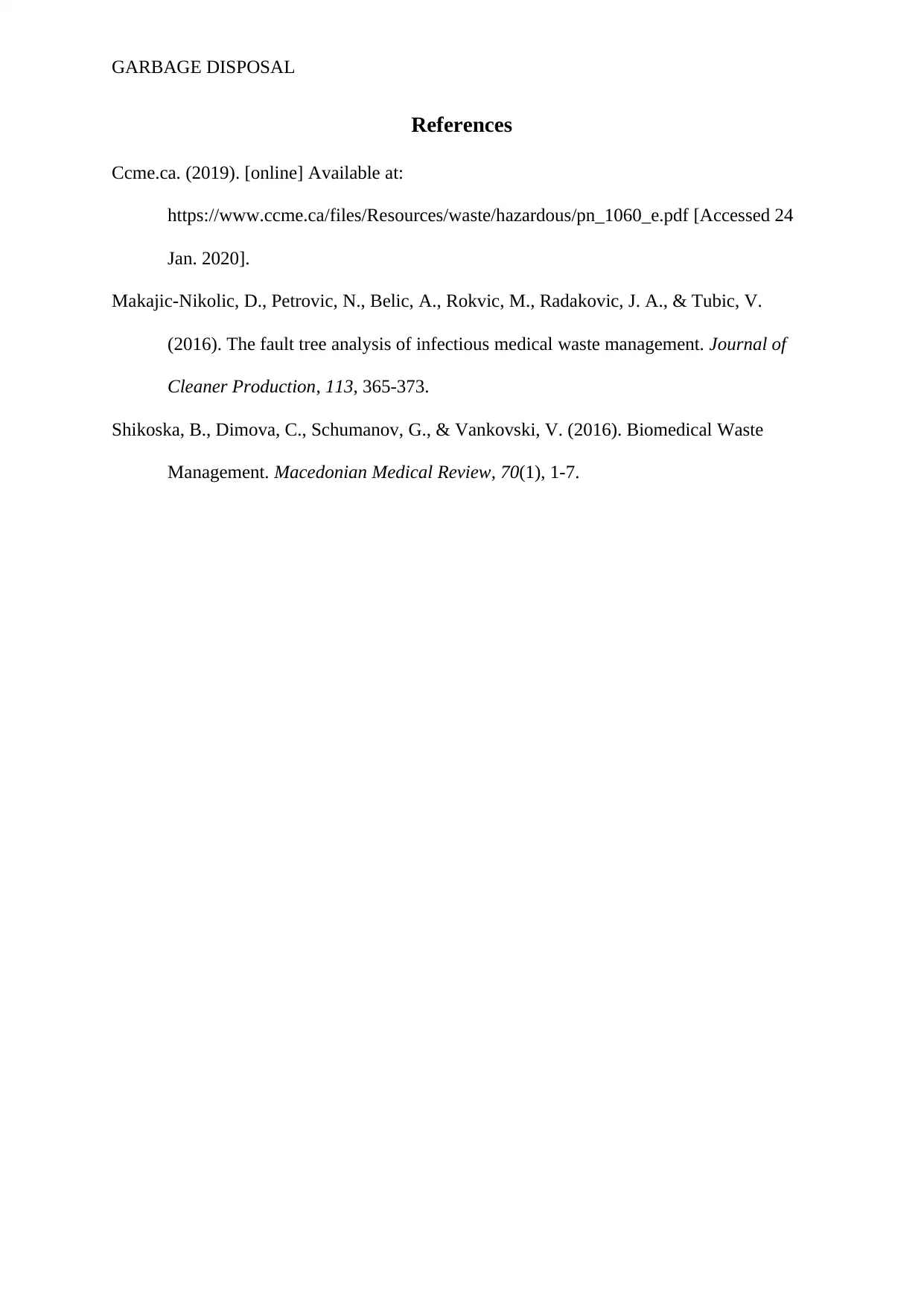Report: Efficient Garbage Disposal in Canadian Healthcare Settings
VerifiedAdded on 2022/08/20
|4
|712
|18
Report
AI Summary
This report investigates efficient garbage disposal practices in Canadian healthcare settings, emphasizing biomedical waste management. It highlights the critical importance of proper waste segregation, packaging, treatment, and disposal to minimize risks to patients, healthcare workers, and the environment. The report discusses the composition of biomedical waste, including sharps, bodily fluids, and anatomical waste, and underscores the hazards associated with improper handling. It proposes interventions such as color-coded segregation, appropriate packaging, and treatment methods like steam autoclaving and chemical decontamination. The use of incinerators as the preferred disposal mechanism is also recommended. The report compares the outcomes of effective waste management with the consequences of poor practices, such as increased hospital-acquired infections, pollution, and disease transmission. It concludes by emphasizing the need for efficient biomedical waste management to improve patient safety, reduce environmental impact, and control the spread of diseases within healthcare facilities. The report references relevant sources to support its findings and recommendations.
1 out of 4











![[object Object]](/_next/static/media/star-bottom.7253800d.svg)